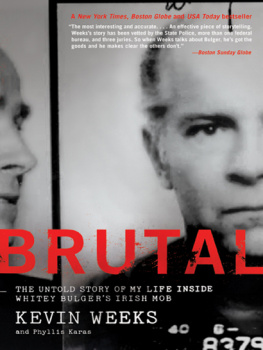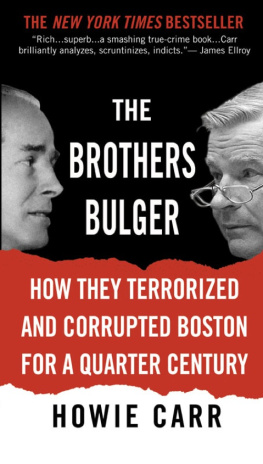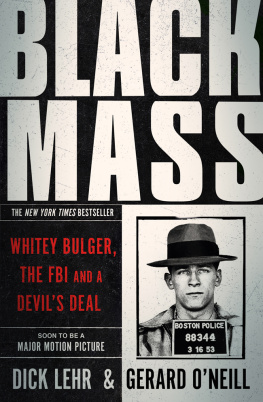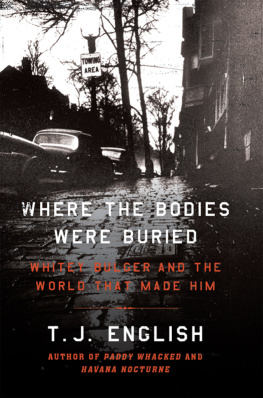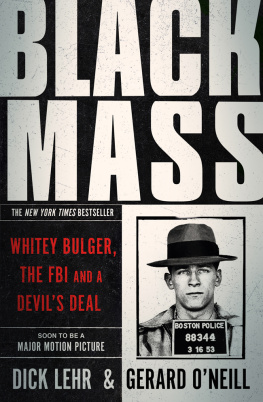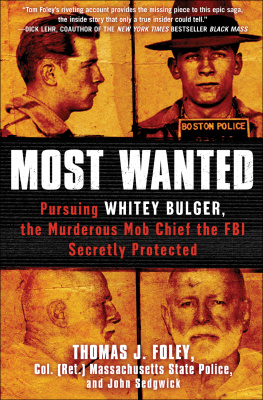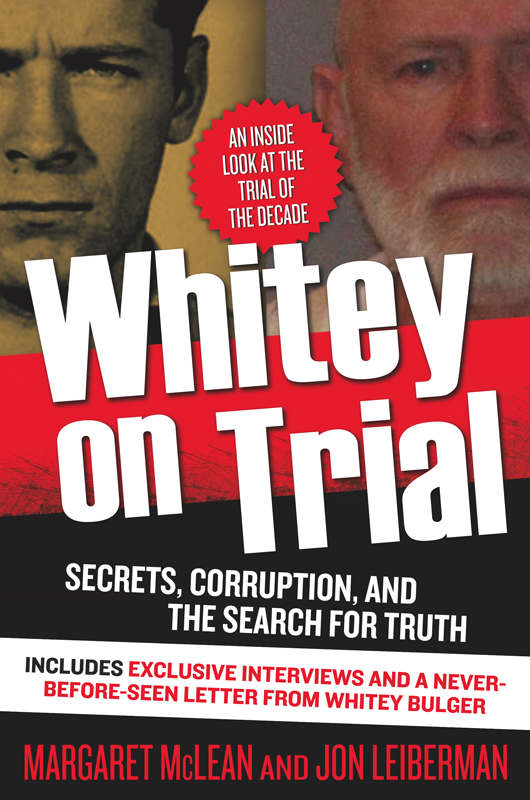
The authors and publisher have provided this e-book to you without Digital Rights Management software (DRM) applied so that you can enjoy reading it on your personal devices. This e-book is for your personal use only. You may not print or post this e-book, or make this e-book publicly available in any way. You may not copy, reproduce, or upload this e-book, other than to read it on one of your personal devices.
Copyright infringement is against the law. If you believe the copy of this e-book you are reading infringes on the authors copyright, please notify the publisher at: us.macmillanusa.com/piracy.
For the victims families: We hope you find peace.
Margarets dedications:
To my mother, Carol OBrien McLean, the best mom anyone could ever have.
I miss you.
Jons dedications:
To BryceYou inspire me.
To Grandma and Bob-BobI hope wherever you are, this makes you proud.
Acknowledgments
We are grateful to all of you who helped guide us through this long and complicated history of Bostons organized crime dating back to the 1960s through the present. Thank you for taking the time to provide us with exclusive behind-the-scenes interviews for this book. A special shout-out to the U.S. Marshals who ran everything so smoothly at the John Joseph Moakley Federal Courthouse. You always greeted us with smiles, and brightened even the darkest days of the trial.
Thank you to Tom Doherty and Bob and Susan Gleason for believing in this book and our partnership. We also appreciate your friendship and guidance. Thanks to Kelly Quinn for putting up with all of the e-mails and calls to make sure things were just right. We applaud all the hard work and camaraderie from everyone at Tor/Forge.
* * *
Margaret: Thank you to my parents, Robert and Carol McLean, for your support, and to my children, Sarah, Dave, and Kate Barcomb, for your patience all summer as I attended the trial. Id like to extend a special thank-you to Patricia Donahue for welcoming me into your family with open arms. I appreciate all the new friendships that have blossomed from covering this trial: It brought good people together, ranging from victims families to law enforcement. Thank you to all my friends, and especially Pen White for putting up with my obsession with this trial. A special thanks to everyone at NECN and WGBH for bringing me on board to provide trial analysis every morning.
A big thank-you to my coauthor, Jon, for all his hard work, for making me laugh, and for being so encouraging and upbeat when the deadlines loomed.
* * *
Jon: Thank you to all of my family, friends, and colleagues for all of the encouragement. It has meant the world to me during this daunting undertaking. I love you all. And Im sorry to those of you I neglected during this laborious process. I hope this work makes you proud.
Thanks to my coauthor, Margaret, for weaving this amazing tale.
Contents
All causes shall give way: I am in blood
Stept in so far that, should I wade no more,
Returning were as tedious as go oer.
William Shakespeare, Macbeth, Act III, Scene IV
chapter
CONFLICTS
At the center of all this murder and mayhem is one man, the defendant in this case, James Bulger.
Assistant U.S. Attorney Brian Kelly, opening statement
It was a note from a killer. A handwritten letter, nestled between bills in the mailbox, and postmarked ten days after a jury rendered a verdict at his trial. From: Whitey Bulger . The man accused of murdering nineteen people had written to us, wanting to tell his side of the story.
We couldnt open it.
We, Margaret McLean and Jon Leiberman, had joined forces to cover the sensational trial and write about it. Margaret is a former Boston-area prosecutor, legal analyst, and law professor at Boston College. Jon reported for Americas Most Wanted and traveled around the world with the FBI task force searching for Whitey while he was a fugitive from justice.
Why couldnt we open that letter? We had formed intimate bonds with victims relatives and members of law enforcement who had pursued Whitey for decades. They had helped us for months with this complicated case, given us their time.
Including a letter from Whitey in our coverage of the story felt like a betrayal. We fought about it. Was it the right thing to do? Our friends had experienced the murder of loved ones. Other friends had been tortured and beaten by Whitey. Those memories were painful for them, but they had learned to trust us and had shared private moments and feelings. Allowing Whitey to have his say felt wrong.
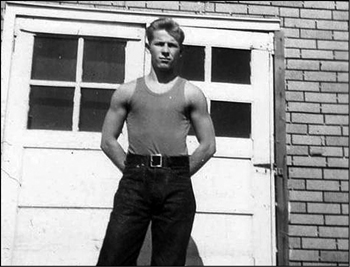
James Whitey Bulger shown here as a young man. The defense submitted this photograph toward the end of the trial.
The trial itself had been overwhelming. Another friend and key prosecution witness had been murdered mid-trial. Silenced . He never had the chance to testify.
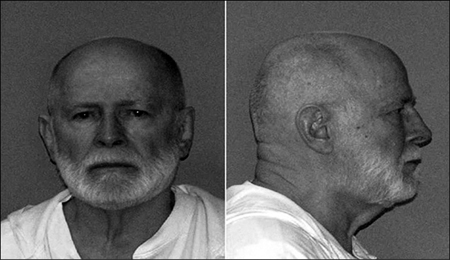
James Whitey Bulger following his arrest in Santa Monica, California, after spending sixteen years on the lam.
We became aware of the conflicts raging beneath the surface before the trial even started. Victims relatives came to us for advice, torn over which side to root for at trial. We wondered how could that be? Dont victims always want the prosecution to win? Neither of us had seen that. We knew the trial would reveal decades of terror, extortion, and bodies buried in unmarked graves. Machine guns. A beautiful girl, strangled and buried in the basement. A brown-stained, grinning skull and she was known for her smile .

Photograph of the bloody interior of an automobile that Al Plummer, Hugh Sonny Shields, and Frank Capizzi rode in on March 19, 1973, in the North End. It was the target of a gangland hit. Plummer was killed.
The evidence of violence was overwhelming, so why werent the victims rooting 100 percent for the prosecution? The government typically upholds the principles of truth and justice, right?
We learned that Whiteys trial was far from black-and-white. It contained murky layers involving government leaks of top secret information that had caused innocent people to be killed. The massive-scale cover up and corruption went all the way up from Boston to the Department of Justice in Washington, D.C. Top echelon FBI informants were murdered while the government looked the other way.
We opened that letter, and we are sorry for the pain it will inflict on some of our friends. We did it to expose the truth, and sometimes we need to hear it from all angles. A copy of Whiteys letter has been included toward the end of the book.
What follows is an eyewitness account of the Whitey Bulger trial and countless interviews with people intimately connected to the case.
chapter
ALL RISE
I dont think you know how big this case is really going to be until you step in that courtroom. Its been thirty-one years since my husband was murdered. Im in a catch-22 situation. We want Whitey to lose but we dont want the government to win either.
Patricia Donahue, on the eve of the trial




